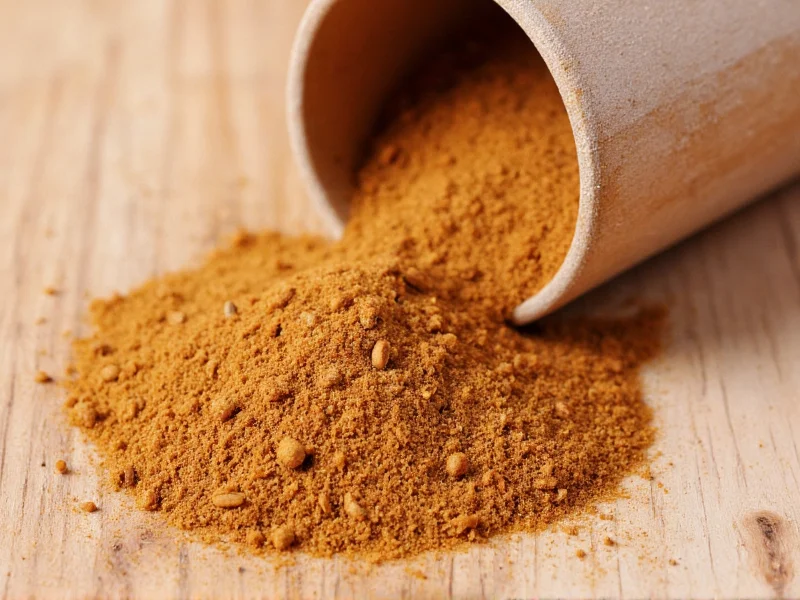Understanding Nutmeg's Unique Flavor Profile
Nutmeg delivers a complex sensory experience that sets it apart from other spices. The flavor profile contains warm, sweet elements with subtle undertones of pine, citrus, and mild pepper. When you're wondering what does nutmeg taste like, think of a balanced combination between cinnamon's sweetness and black pepper's gentle heat, but with its own distinctive character.
The chemical composition of nutmeg creates this unique experience. Myristicin and elemicin are primary compounds responsible for nutmeg's warm, slightly hallucinogenic properties when consumed in extreme quantities (though culinary use presents no risk). These compounds work together to produce nutmeg's signature aroma and taste that can transform ordinary dishes into extraordinary culinary experiences.
Fresh Nutmeg vs Ground Nutmeg Flavor Differences
Understanding the difference between fresh and pre-ground nutmeg is crucial for maximizing flavor impact. The nutmeg flavor profile changes significantly based on preparation:
| Characteristic | Freshly Grated Nutmeg | Pre-Ground Nutmeg |
|---|---|---|
| Flavor Intensity | Bright, vibrant, complex | Muted, one-dimensional |
| Aroma | Strong, warm, immediately noticeable | Subtle, often barely detectable |
| Shelf Life | Peaks within 15 minutes of grating | Loses 80% of flavor within 6 months |
| Best For | Finishing dishes, delicate sauces, béchamel | Hearty stews, baked goods with long cook times |
For optimal how to use nutmeg in cooking results, invest in a microplane grater and whole nutmeg seeds. The flavor difference is comparable to using fresh garlic versus powdered garlic—completely transformative for discerning palates.
Culinary Applications and Pairing Suggestions
Nutmeg's versatility makes it valuable across multiple culinary traditions. Understanding nutmeg pairings helps maximize its potential in your cooking:
Savory Dishes
- Cheese sauces and béchamel: A pinch enhances dairy-based sauces without overpowering
- Root vegetable dishes: Complements roasted carrots, parsnips, and sweet potatoes
- Meat preparations: Works particularly well with pork, chicken, and game meats
- Spinach and leafy greens: Traditional in French and Italian preparations
- Stocks and broths: Adds depth when used sparingly in bone broths
Sweet Applications
- Pumpkin and squash dishes: Essential in pumpkin pie and other autumnal desserts
- Rice pudding and custards: Classic pairing in European dessert traditions
- Apple-based desserts: Complements apple pie, crisps, and tarts
- Spice cakes and cookies: Works with cinnamon and cloves in gingerbread
- Hot beverages: Enhances eggnog, hot chocolate, and mulled wine
Proper Usage Techniques for Maximum Flavor
Mastering how to use nutmeg properly prevents common mistakes that can ruin dishes. The key principle: nutmeg is potent, so less is more. Overuse creates bitterness that dominates other flavors.
For most dishes, use these measurements as starting points:
- 1 pinch (about 1/16 teaspoon) per 2 cups of liquid for sauces and soups
- 1/4 teaspoon per pound of meat
- 1/8 teaspoon per cup of flour in baked goods
- Always add nutmeg toward the end of cooking for maximum flavor impact
When working with fresh nutmeg vs ground nutmeg, remember that freshly grated requires approximately half the quantity of pre-ground to achieve equivalent flavor intensity. The volatile oils that create nutmeg's distinctive taste dissipate quickly once ground.
Nutmeg Varieties and Quality Indicators
Not all nutmeg delivers the same flavor experience. The two primary commercial varieties offer distinct characteristics:
- Grenadian nutmeg: Considered superior with higher essential oil content (12-15%), producing a more complex, sweeter flavor profile
- Indonesian nutmeg: More widely available but slightly less aromatic (8-12% essential oils), with a sharper, more medicinal note
When selecting quality nutmeg, look for these indicators:
- Heavy weight for size (indicates density and oil content)
- Deep brown color without spots or blemishes
- Strong aroma when scratched with a knife
- Firm texture that doesn't crumble when pressed
Proper storage maintains nutmeg flavor longevity. Keep whole nutmeg in an airtight container away from light and heat. Properly stored, whole nutmeg retains peak flavor for 2-3 years, while pre-ground loses potency within 6 months.
Common Nutmeg Mistakes and How to Avoid Them
Even experienced cooks make errors with this potent spice. Understanding these pitfalls improves your culinary results:
- Overuse: Nutmeg becomes bitter beyond 1/4 teaspoon per serving. Start with less and adjust.
- Using stale nutmeg: Old nutmeg loses aromatic compounds. Test by grating a small amount - if no strong aroma appears, replace it.
- Adding too early in cooking: Volatile oils evaporate with prolonged heat. Add during the last 5-10 minutes of cooking.
- Mixing with competing spices: Nutmeg clashes with strong flavors like cumin or smoked paprika. Balance carefully.
Nutmeg Substitutes When You've Run Out
While nothing perfectly replicates nutmeg flavor characteristics, these alternatives work in a pinch:
- Mace: The outer covering of the nutmeg seed, with similar but more delicate flavor (use 3:1 ratio mace to nutmeg)
- Pumpkin pie spice: Contains nutmeg plus other spices (use half the amount of nutmeg called for)
- Allspice: Shares some warm notes but lacks nutmeg's sweetness (use 2:1 ratio)
- Garam masala: Complex blend that includes nutmeg notes (use sparingly as it contains many competing flavors)
Remember that substitutes alter the dish's flavor profile. For authentic what nutmeg tastes like experience, nothing beats the real thing in proper quantity.
Health Considerations and Safety
Nutmeg offers more than just flavor. In culinary quantities, it provides:
- Magnesium for muscle function
- Copper for iron metabolism
- Manganese for bone health
- Antioxidants that combat oxidative stress
However, excessive consumption (more than 1-2 teaspoons at once) can cause nutmeg poisoning due to myristicin content, with symptoms including dizziness, nausea, and palpitations. Culinary use presents no risk, but avoid using nutmeg as a recreational substance.
Those with nut allergies generally tolerate nutmeg well since it's a seed, not a true nut. However, consult your physician if you have specific concerns about nutmeg flavor safety.











 浙公网安备
33010002000092号
浙公网安备
33010002000092号 浙B2-20120091-4
浙B2-20120091-4